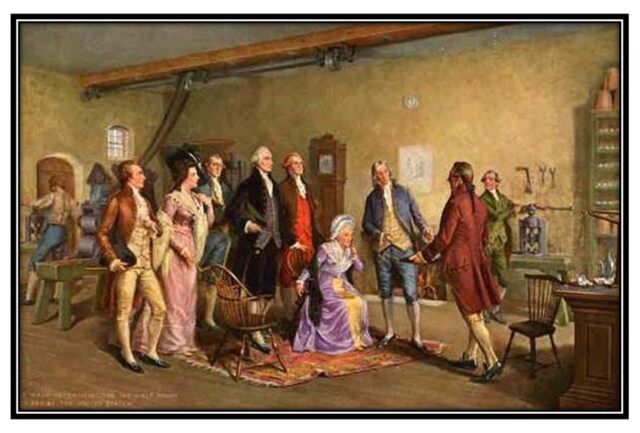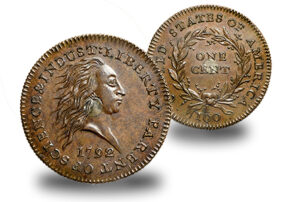 On this day in 1792, the Coinage Act creates the U.S. Mint and provides for the construction of a new building in Philadelphia. That building was the first federal building to be built under the new U.S. Constitution.
On this day in 1792, the Coinage Act creates the U.S. Mint and provides for the construction of a new building in Philadelphia. That building was the first federal building to be built under the new U.S. Constitution.
In the wake of the American Revolution, the country faced persistent problems because of the monetary system and because of the debts accrued during the war. At least in our early years, there was no uniformity. Under the Articles of Confederation, the states typically issued their own money and made their own rules. Paper money, in particular, had long been a problem, as it was often devalued because of the actions of the state governments.
Given this history, you can understand that the issue of paper money was a bit prickly at the Constitutional Convention. An early draft of the Constitution allowed the federal government to “emit bills on the credit of the United States,” but some delegates were unhappy with such a provision and the phrase was eventually omitted. As a result, our federal government of enumerated powers was never expressly delegated the power to create paper money, although it was given the power to “coin Money” (Article 1, Section 8). (Note, however, that states are expressly prohibited from “emit[ting] Bills of Credit.”)
 What does all this mean? Well, the federal government’s authority to issue paper money was a bit more controversial than you might think. It wasn’t until the late 1800s that the Supreme Court finally determined that paper money could be used as legal tender.
What does all this mean? Well, the federal government’s authority to issue paper money was a bit more controversial than you might think. It wasn’t until the late 1800s that the Supreme Court finally determined that paper money could be used as legal tender.
When the mint eventually struck coins in 1793, the first coins that it produced were “half dimes.” Legend has it that they were produced from silverware provided by George and Martha Washington. Later, the first *circulating* coins to be produced were copper cents.
So, did you ever wonder? What was the very first U.S. cent spent on? What do you think the merchant thought when he saw that copper coin? Did he have a tiny qualm, wondering if it was legitimate?
P.S. The attached picture is of George Washington, inspecting the first U.S. coins.








